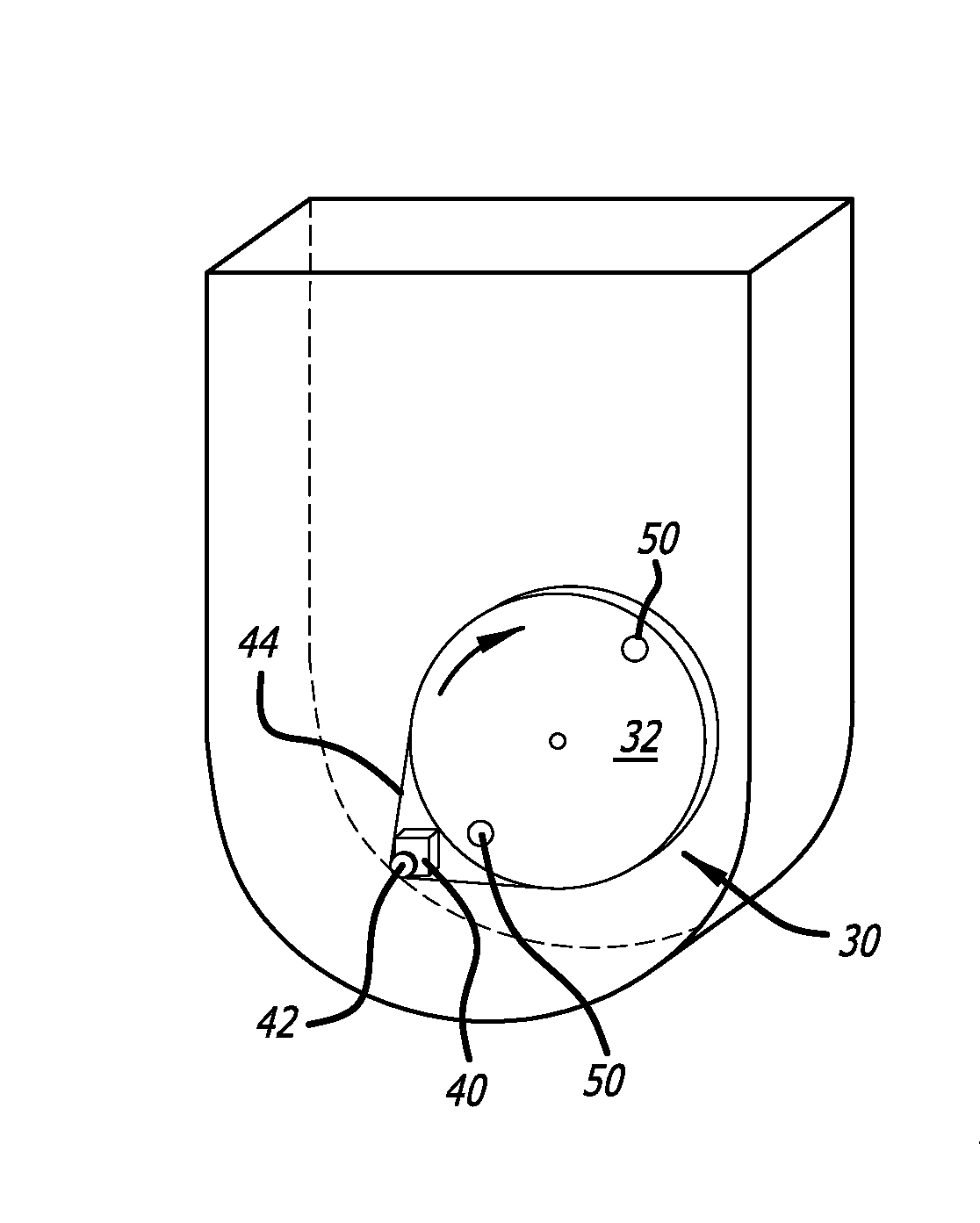Vertical mixing bioreactor and drive system therefor
- Summary
- Abstract
- Description
- Claims
- Application Information
AI Technical Summary
Benefits of technology
Problems solved by technology
Method used
Image
Examples
Embodiment Construction
[0028]The present application provides a solution for driving bioreactor impellers that reduces contamination and maintenance. The solution involves an indirect drive system and modified impeller. In this context, “indirect” means that the impeller is driven via means other than directly rotating it through a shaft, for example. This eliminates the contamination issue with shaft seals and the like. However, pneumatic drive systems, such as disclosed in U.S. Patent Publication No. 2011 / 0003366 to Zeikus, are not considered indirect even though there is no shaft because of the introduction of air into the bioreactor vessel to rotate the impeller. Indirect thus means influencing the impeller completely from outside of the vessel.
[0029]A bioreactor 20 illustrated in FIG. 1 includes a rigid outer container 20 that receives a single-use bioreactor vessel 22 of sufficient size to contain a fluid to be mixed. A variety of different sizes of bioreactors are used from the maximum working volu...
PUM
 Login to View More
Login to View More Abstract
Description
Claims
Application Information
 Login to View More
Login to View More - R&D
- Intellectual Property
- Life Sciences
- Materials
- Tech Scout
- Unparalleled Data Quality
- Higher Quality Content
- 60% Fewer Hallucinations
Browse by: Latest US Patents, China's latest patents, Technical Efficacy Thesaurus, Application Domain, Technology Topic, Popular Technical Reports.
© 2025 PatSnap. All rights reserved.Legal|Privacy policy|Modern Slavery Act Transparency Statement|Sitemap|About US| Contact US: help@patsnap.com



